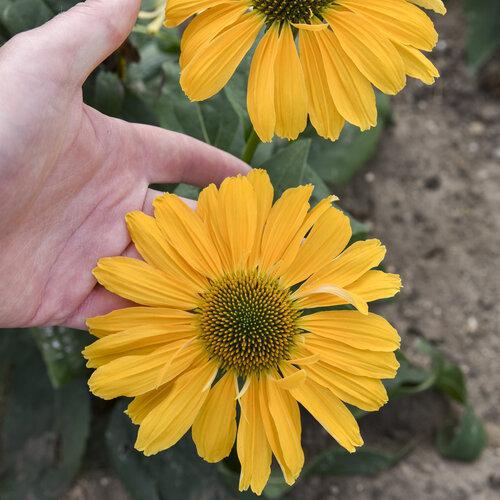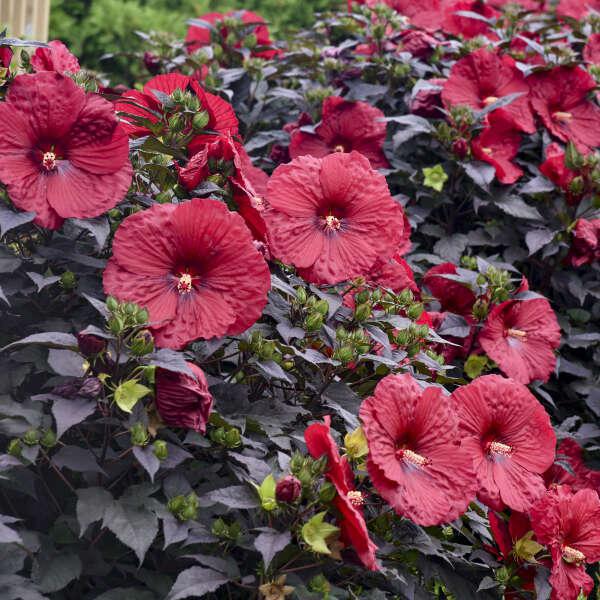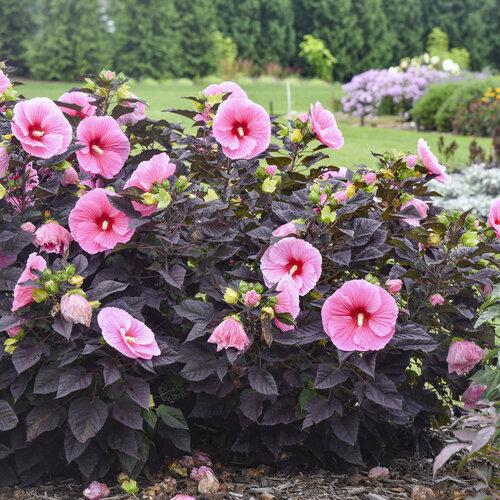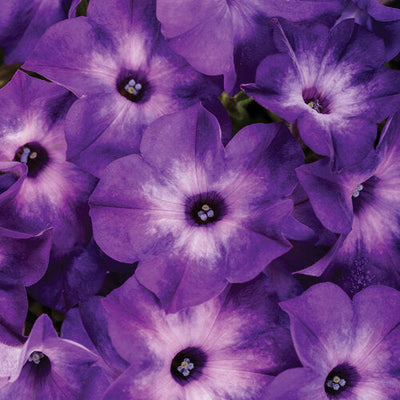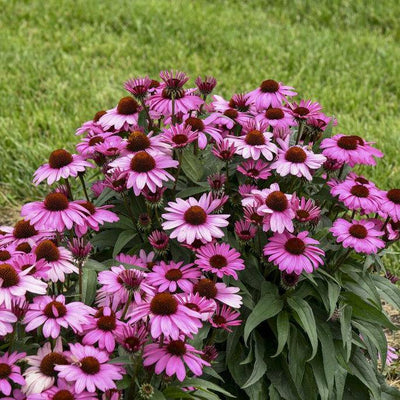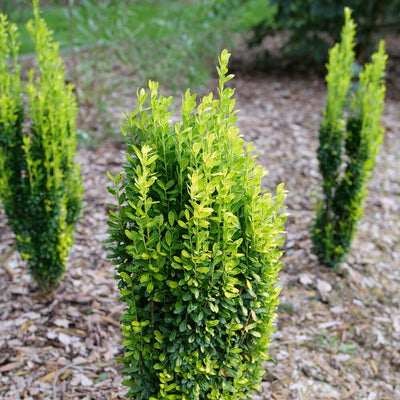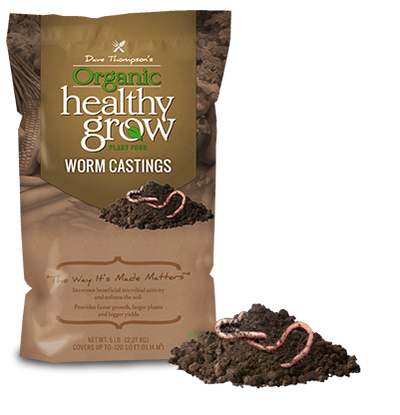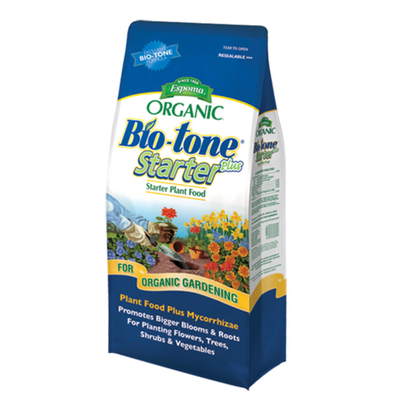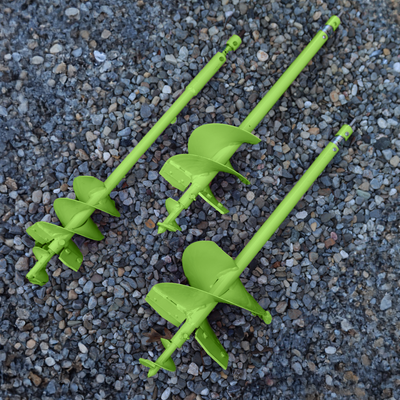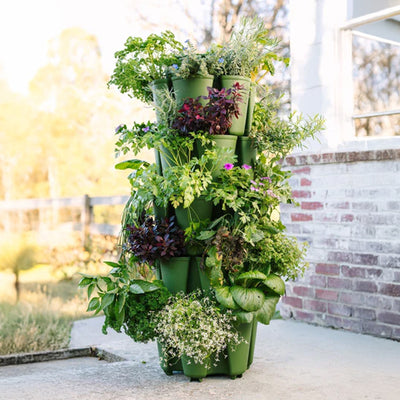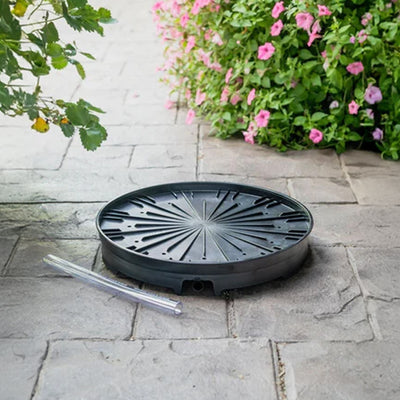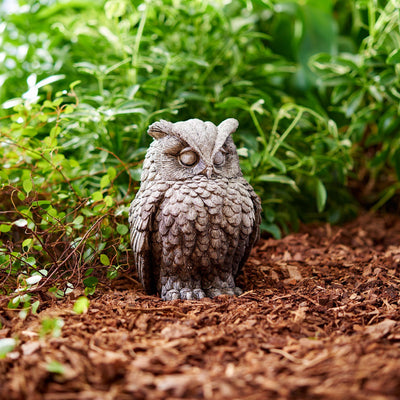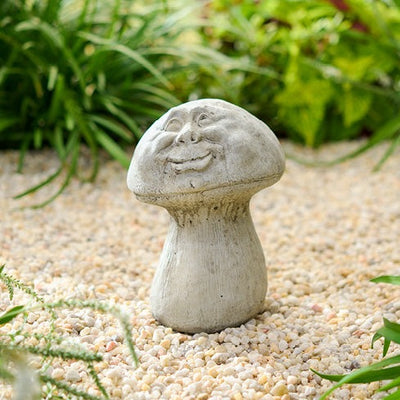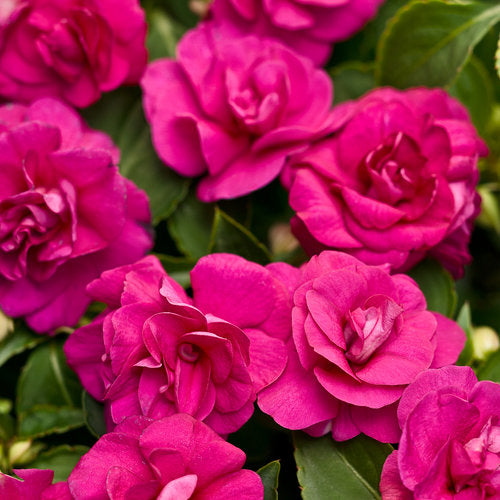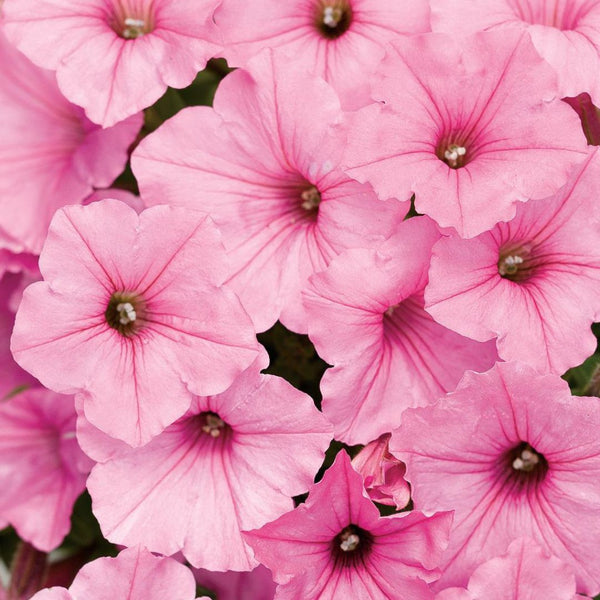Ask Jenny: How To Use The Thriller, Filler, Spiller Recipe
Video Transcript
Hey friends, welcome to Gardening with Creekside. Today we are going to be answering one of your sweet viewers' questions, and then this kind of launches me into a whole new series that I want to start. Basically, an "Ask Jenny." So if you have common gardening questions or you have a problem in your garden, put it in the comments below and in subsequent videos. I will look at those questions and comments. If I think it makes a great video or that other people have that kind of question, then we'll do a whole video on it. So you can all thank Barbara for this new series and this video because I have my phone here. She commented, I think it was on a video last week, and this was her question, which is very, very common. We see it online and we see it in the garden center all the time.
So Barbara says, "I want to buy, but I don't know what combinations will work in my large concrete pots that are in full sun. Thriller filler Spiller filler. I have a tough time visioning it." So that is what we're going to talk about today. I am going to give you my tips and tricks on how to create and plant a very successful container.
Now, first of all, before we get into this, don't overthink it, right? Because I think sometimes we can get really bogged down into a container, and we think it has to be perfect, and all the colors have to be perfect, and it all has to blend together just perfectly. Don't worry about it, y'all. This is gardening. This is supposed to be fun. This is not supposed to be stressful. So I want you, first and foremost, to enjoy the process.
With that being said, as I talk this through, I am going to be planting this container here in the Forest Pansy bed. I thought I would just, you know, get a little work done while we are talking about all things fun and gardening here together.
So before we get too far into it, I'm just going to give you a rundown of what I have here. I have this Norwich container from Unique Stone. We are in the Forest Pansy bed right here off of the patio. This bed has not been taken care of for the fall, so you're going to see things that need to be deadheaded, trimmed back, and there's leaves everywhere.
I am going to be creating what we call a monoculture container. So this is tip number one that you can think about when you're wanting to create a container. I love monoculture containers. What does that mean? Mono means one, culture means plant. So I am going to be planting this Norwich planter with only the same kind of plant but in multiples. I have some violas right here. This is the Penny Rose blotch. Nice, sweet, deep dark rose flowers on it. I'm only going to use that same plant in the whole container. So when in doubt, if you have a plant that you absolutely love, it doesn't matter what it is or what the sun conditions are, you can take multiples of that plant and put it in a container. It makes a huge statement, especially from far away because you just see this big, bold section of color in your garden.
Start with a nice layer of compost. I have had my Land and Sea in here. The bottom layer of the container, I have put fresh compost. Always start, especially going from spring on, start with fresh soil. I'm going to ask for Jerry's help here because this bag is soaking wet, and I cannot pick it up.
After you've got your compost down, right, the bottom third, come back with your great potting soil. I've got the Proven Winners potting soil. That's what I use, and I've loved it. I've used it for years. Then you're going to put that down. Now, remember how I said, doing a monoculture? That's what we're going to do, and it's beautiful and gorgeous. But we're also going to jazz it up a little bit. So, see, this is where there are no rules in gardening. We're going to do a monoculture, but we're also going to add some tulip bulbs to the bottom of it because I have tulips left over, so why not use them here? So we're going to put them down in the bottom, and then we're going to plant our violas on top. So that's all I'm doing is laying them down in here. We got about 6 inches below the soil line, which is what the tulips want.
When you are planting your containers, you can do the monoculture. This is beautiful with petunias and supertunias, calibrachoas. I love that. That's one of my absolute favorite monocultures. You can do it with impatiens. You can do it with begonias. Literally, any plant you can do a monoculture. So when in doubt, pick one plant that you absolutely love and put multiple multiples of those in that container.
Now, there is a really industry-wide... This is... I did not create this. I don't know what genius came up with this little saying, but the saying is Thriller, filler, Spiller, and this really is a surefire way to create a beautiful container. So in a nutshell, a thriller is something tall that is in your container that's going to go up. For the most part, it goes up, and maybe it will spill over a little bit. Then you have your filler. Filler is just something nice and fills in that in-between space of the tall and your Spiller, what hangs over the container. Now we're going to go through this kind of each one, and I am going to give you some recommendations that are really like surefire winners in my book and in my garden that you can be successful with.
Thrillers, you can use an annual grass. So you could use the purple fountain grass, right? So that's nice and big and purple. You could use fireworks, which is a lovely red. Skyrocket, which is a lovely shade of green and white. You can use that. You can use chuse's coleus. Any of the ColorBlaze coleus from Proven Winners, you're going to do great as far as using those as your Thrillers because they are nice and upright, and they will do sun or shade, which is fantastic. I see the only ones that maybe you don't want to use as a thriller would be the Drops, Chocolate Drop, Strawberry Drop. Those are going to be a Spiller because it's a trailer.
Some other great options for your Thrillers are Angelonia. That is a great one. The Angel Face series is a great option. Lots of beautiful continuous blooms. One of my favorite ones, especially if you have a large container, is the Rockin' salvias. So, Rockin' Deep Purple, Fuchsia, Blue, Blue Suede Shoes, all of those are going to be wonderful options.
Now, as your Spiller, you might want to go ahead and think of something that's nice and full. Euphorbia, the Diamond Snow. Nice white compact white color to it, and really makes a nice impact. The Diamond Frost is one that is nice and light and airy. So it mixes in quite nicely with other plants. So with your Spillers, we're really thinking of what can we put in and fill in that will just kind of fill in any of those empty spaces in your container.
So some other great Spillers to put in your containers, right? We're thinking of those nice full ones. If you have a shade container, then a great one is the Rockapulco series of double impatiens. These are nice and full, massive loads of color, and do really well in the shade. They like to have maybe a little bit of morning sun, and some definite overall shade is a shade plant.
Now, you are going to notice if you go to our website, gardeningwithcreekside.com, you click on annuals and you scroll down on the left-hand side of your screen, you're going to see what we call filters. And this is a way that you can sort through the different plants that we have listed. There is going to be a box there, and you're going to see where it says Thriller, filler, Spiller. You can click and you can sort through the annuals that we consider great Thrillers, what is a great Spiller, what is a great filler. So if you have questions, you can go there and sort accordingly.
Now, you may look at some of those, say, for example, the Supertunia Petunias. They're going to be listed sometimes as a filler rather than a Spiller. And so some plants will actually be considered both a thriller and a Spiller because they really fulfill both roles. They will go up, and they will spill over. So don't be too terribly confused. And this is why we don't want to overthink it too terribly much because some of the plants do have that habit of both going up and trailing over. So if you've got shade, then those Rockapulcos. If you've got lots of good, beautiful sun, then the campfire series of like the bidens.
So we've got Campfire Flame, which is a nice hot orange. That is a beautiful one. New this year is the Campfire Marshmallow. It is a beautiful pure white, and then in the center, it has a little bit of yellow. Over my shoulder is just the patio. And last year, I used those Campfire Marshmallows as a beautiful filler around my Sprinter boxwoods. They were absolutely stunning. And so, in that aspect, all I did was Sprinter boxwood in the center because those urns, you see them all the way around. I did Campfire Marshmallow all the way around. They were beautiful containers.
So you will see that some plants, you think, "Oh, well, gosh, you know, would this be the... Is this the best color combination? Do they complement each other very well? Blah, blah, blah. Are they the same shades or the same hues or the same color palette family?" Y'all, if you like it and you enjoy it, go for it. So I really just encourage you to go out there and do your research. Right? While we're in the winter, go ahead and start making some plans and look over the website, do those filters of the Thriller, filler, and Spiller. See what different plants are out there. Pick what I tell customers at the nursery is if they get too overwhelmed, I say, "Okay, pick one plant. Which one plant do you absolutely love?" And then go from there. So let's say it is the Supertunia Mini Vista White. I just picked something out. I don't know. Or the Mini Vista Indigo. It's kind of a bluish color set. Indigo blue. Go from there. Do you want to use pinks with that? Or do you want to use some yellows? And then look at different plants that kind of match that category and then build up from there.
And in doubt, just pick one plant, do a monoculture in your container, and it will be just fine. So when you're looking at your containers, make sure they all have the same sun requirements. You don't want to put a shade plant in the full sun and vice versa. But that's kind of it in a nutshell as the Thriller, filler, and Spiller. Go to the website, search through them, use that filter, and really just have fun in putting them together.
And honestly, y'all, the best way to figure out good color combinations or plant combinations is just to do it. Just go in there, and you're going to do your research, and you're going to look at it, and you're going to say, "Okay, I think this is a great combination. Go for it." And that year, you may absolutely love it, and you're like, "This is the best thing ever." But your experience is your best teacher because sometimes you think, "Oh, well, gosh, you know, would this be the... Is this the best color combination? Do they complement each other very well? Blah, blah, blah. Are they the same shades or the same hues or the same color palette family?" Y'all, if you like it and you enjoy it, go for it.
So I really just encourage you to go out there and do your research. Right? While we're in the winter, go ahead and start making some plans and look over the website, do those filters of the Thriller, filler, and Spiller. See what different plants are out there. Pick what I tell customers at the nursery is if they get too overwhelmed, I say, "Okay, pick one plant. Which one plant do you absolutely love?" And then go from there. So let's say it is the Supertunia Mini Vista White. I just picked something out. I don't know. Or the Mini Vista Indigo. It's kind of a bluish color set. Indigo blue. Go from there. Do you want to use pinks with that? Or do you want to use some yellows? And then look at different plants that kind of match that category and then build up from there.
And in doubt, just pick one plant, do a monoculture in your container, and it will be just fine. So when you're looking at your containers, make sure they all have the same sun requirements. You don't want to put a shade plant in the full sun and vice versa. But that's kind of it in a nutshell as the Thriller, filler, and Spiller. Go to the website, search through them, use that filter, and really just have fun in putting them together.
And honestly, y'all, the best way to figure out good color combinations or plant combinations is just to do it. Just go in there, and you're going to do your research, and you're going to look at it, and you're going to say, "Okay, I think this is a great combination. Go for it." And that year, you may absolutely love it, and you're like, "This is the best thing ever." But your experience is your best teacher because sometimes you think, "Oh, well, gosh, that was super vigorous, and this one wasn't vigorous enough." You will learn the more you do it's the more you're going to learn. And then, of course, in my garden, you know, one container is never enough. So we have multiple containers, and you can just try different things out in different containers, see what works, and then make notes. And then the next year, you can tweak it a little bit and kind of refine it and fine-tune it. That's what's fun about gardening; you never master it; you are simply enjoying the process and learning from year to year because every year it's going to have different, you know, um conditions and different challenges for you in the garden, and you're just going to have fun.
All I did was get the soil in there; the tulips are way down nice and deep. A little bit more soil, planted the violas in there, and then I came back and top-dressed with some land and sea. This is nice and damp soil because we just got 4 inches of rain, and this soil was in the container, so it is fine. I'll come back through and just give it a nice good drink of water so it gets all nice and watered in. But just get out there and have fun in your garden. It is like, here I am, right in the end of December, middle of December, in my coat and my sweater and my hat. Sun feels good on your back because before we know it's spring is going to be here, and we're going to be out here sweating and and slopping around in the garden. Just have fun, y'all. Just keep it simple. Don't stress; it will be beautiful if you enjoy it in your garden. You will be good to go.
As always, we hope you have found this fun, informative, and inspirational. We'll see you on the next video. Bye.
Recent Posts
-
First Arrival of PW Annuals for 2024 & The Greenhouse Is Finished!
-
How To Trim Hellebores & Adding Whimsical Garden Art
-
Work Smarter Not Harder: Using Modern Machinery To Pot Perennials
-
Ask Jenny: How To Use The Thriller, Filler, Spiller Recipe
-
New Website Launch & A Thanksgiving Arrangement From the Garden
-
Updated Plant Hardiness Zones: What It Means For Your Garden
-
How often does Jim Putnam at HortTube fertilize?
-
What is a "Good" Potting Soil? Will You Offer the New 2024 Shrubs?
Related Products
Related Articles
